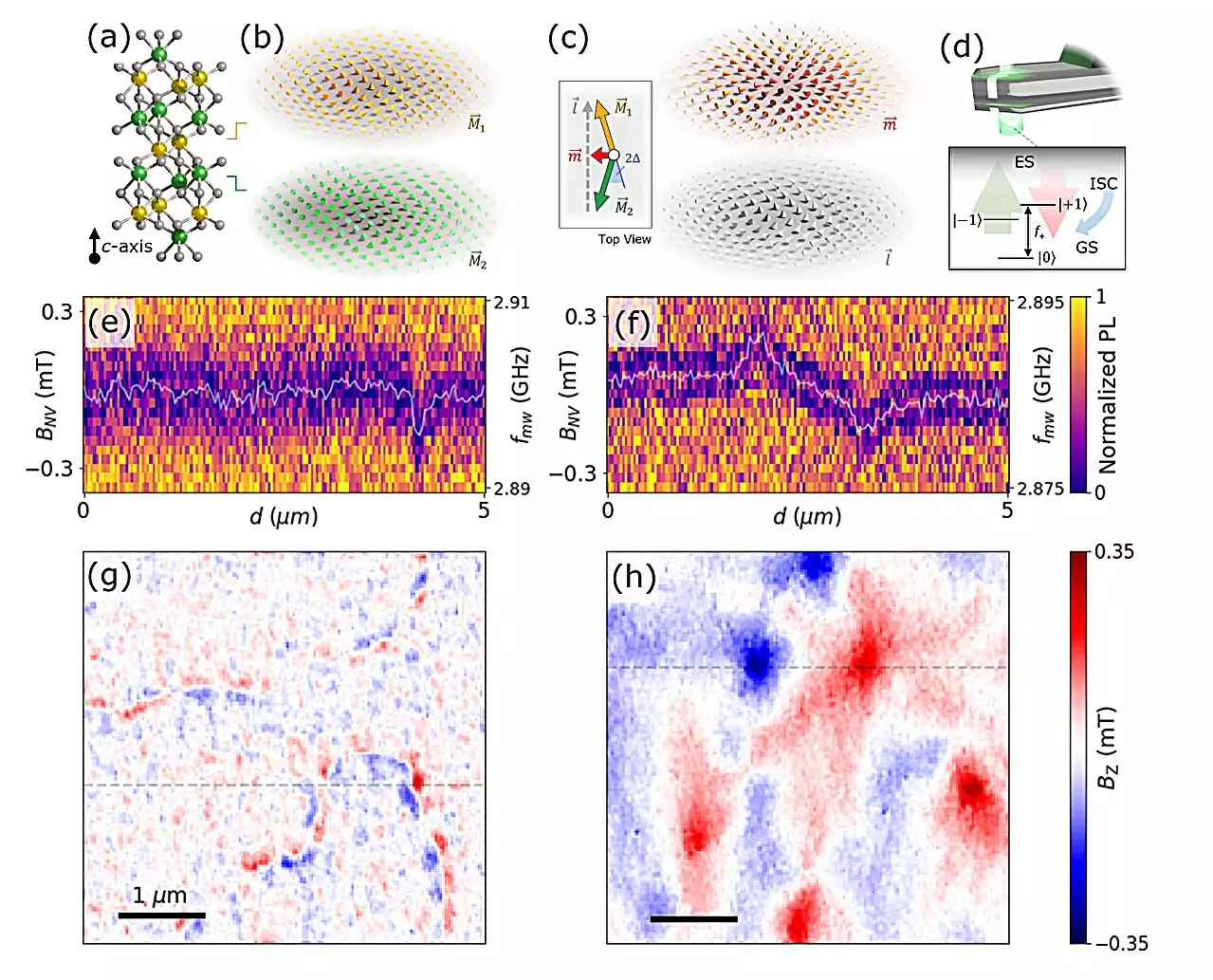In a groundbreaking discovery, researchers have identified magnetic monopoles, which are isolated magnetic charges in a material similar to rust, that have the potential to revolutionize computing technologies. By utilizing a technique called diamond quantum sensing, scientists at the University of Cambridge were able to observe swirling textures and faint magnetic signals on the surface of hematite, an iron oxide. This breakthrough research not only provides the first experimental evidence of naturally occurring emergent monopoles but also establishes a direct link between these magnetic charges and previously hidden swirling textures in materials like hematite.
According to the equations formulated by James Clerk Maxwell, magnetic objects such as fridge magnets or the Earth itself exist as a pair of magnetic poles that cannot be isolated. However, in the 19th century, there was a hypothesis suggesting the existence of monopoles. Maxwell himself disagreed with this idea, which was reflected in one of his foundational equations for the study of electromagnetism. As Professor Mete Atatüre, the leader of the research, explains, “If monopoles did exist, and we were able to isolate them, it would be like finding a missing puzzle piece that was assumed to be lost.”
Approximately 15 years ago, scientists proposed the possibility of monopoles existing in a magnetic material. This theory relied on the extreme separation of the north and south poles in a substance known as spin ice. However, the recent research conducted by the University of Cambridge takes a different approach by exploring the concept of emergence. Emergence refers to the combination of numerous physical entities that give rise to properties beyond or distinct from the sum of their individual parts.
Collaborating with researchers from the University of Oxford and the National University of Singapore, the Cambridge team employed emergence to uncover monopoles spread across two-dimensional space. These magnetic monopoles were observed gliding across the swirling textures on the surface of a magnetic material. These textures are commonly found in two types of materials: ferromagnets and antiferromagnets, with the latter being more stable but more challenging to study due to their weak magnetic signature.
To overcome this obstacle, Professor Atatüre and his colleagues employed a technique called diamond quantum magnetometry, which utilizes a single spin in a diamond needle to precisely measure the magnetic field on the surface of a material without influencing its behavior. By applying this technique to hematite, an antiferromagnetic iron oxide, the researchers were astonished to discover hidden patterns of magnetic charges within the material, including monopoles, dipoles, and quadrupoles.
Unveiling the Potential
This groundbreaking study not only confirms the theoretical predictions of monopoles but also sheds light on their nature and behavior. Rather than being single fixed particles, these monopoles are collective states of many spins twirling around a singularity. The result is a localized stable particle with a diverging magnetic field emanating from it. Dr. Hariom Jani from the University of Oxford emphasizes the significance of the findings, stating, “We’ve shown how diamond quantum magnetometry could be used to unravel the mysterious behavior of magnetism in two-dimensional quantum materials, which could open up new fields of study in this area.”
The researchers highlight the potential of diamond quantum magnetometry not only in unraveling hidden magnetic phenomena but also in powering super-fast and energy-efficient computer memory logic. With the ability to control these swirling textures adorned with magnetic charges, computing technologies can benefit from significant advancements in speed and energy consumption. The implications of this discovery extend beyond computing and have the potential to revolutionize various fields, ranging from data storage to information processing.
The discovery of magnetic monopoles in hematite marks a significant milestone in the field of quantum physics and materials science. By leveraging the power of diamond quantum sensing, researchers have managed to observe emergent monopoles and establish a direct connection between these magnetic charges and swirling textures in materials. This breakthrough paves the way for the development of greener and faster computing technologies, with the potential for super-fast and energy-efficient computer memory logic. As the study showcases the incredible potential of diamond quantum magnetometry, future advancements in this area will undoubtedly unravel further hidden magnetic phenomena and open new avenues for scientific exploration.


Leave a Reply